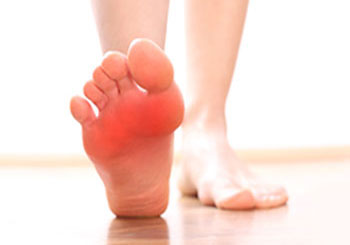Stuart (772) 223-8313Rate Us
Jupiter (561) 744-6683Rate Us
Stuart (772) 223-8313Rate Us
Jupiter (561) 744-6683Rate Us
 Fat pads are thick connective tissues that provide cushioning and shock absorption to protect the ball of the foot and heel. As we age, these fat pads can break down, become worn down, thin, and may even lose elasticity. This is known as fat pad atrophy. Certain foot conditions, rheumatological diseases, injuries, or wear and tear on the area due to high-impact sports or other activities may also lead to fat pad atrophy.
Fat pads are thick connective tissues that provide cushioning and shock absorption to protect the ball of the foot and heel. As we age, these fat pads can break down, become worn down, thin, and may even lose elasticity. This is known as fat pad atrophy. Certain foot conditions, rheumatological diseases, injuries, or wear and tear on the area due to high-impact sports or other activities may also lead to fat pad atrophy.
Fat pad atrophy can cause chronic pain in the heel and/or the ball of the foot especially when walking or standing (particularly in bare feet), or when wearing high-heeled shoes. It may also produce a burning or pounding sensation in the bottom of the feet, or make you feel like you are walking on pebbles. When it occurs in the heel it can accompany, or be mistaken for, plantar fasciitis. A fat pad in the ball of the foot that has become atrophied may shift position and create a feeling similar to bunched up socks under the toes.
Fat pad atrophy that is left untreated is not only painful, but it may also lead to soft tissue injury in nerves and ligaments and other foot conditions such as neuromas, metatarsalgia, and bursitis.
Fat pad restoration or enhancement can treat fat pad atrophy using different methods based on the level of atrophy as well as other factors. A podiatrist may use an injectable filler during an office visit to relieve foot pain and restore volume to the plantar fat pads. Surgical options include placing a graft into the area to restore padding, or transplanting harvested tissue from the patient’s own body in a fat pad transfer (autolipotransplantation).
If you would like more information about fat pad restoration, or if you are experiencing pain in the ball of your foot or heel, schedule an appointment with a podiatrist.